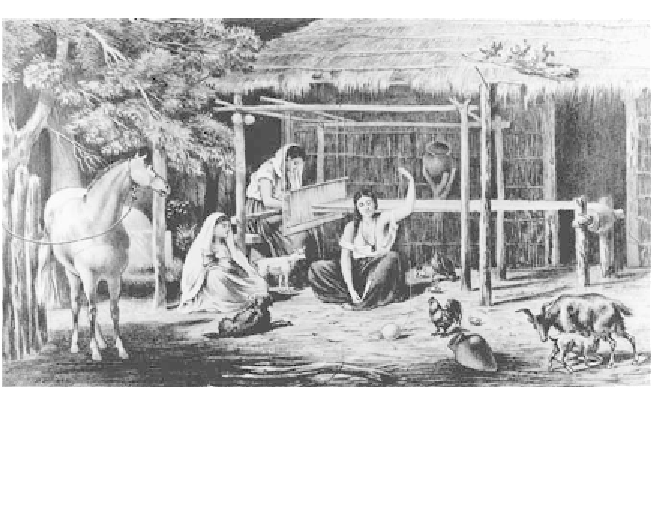Travel Reference
In-Depth Information
Women working at traditional tasks in Santiago del Estero, which became an important
center of commerce in the late 17th century. The town was strategically located between
Córdoba and Salta and came to serve as an exchange for goods, mules, and laborers.
(León Pallière, 1858)
the commodities that passed through Santiago on the way to Potosí
included 40,000 head of cattle, 30,000 mules, and 227 tons of
yerba
(leaves used to make the popular tea
yerbamate
).
Tucumán eventually supplanted Santiago as a more important com-
mercial community. Early on, Spanish traders organized the indigenous
agriculturists to produce “Indian cloths” to be sold in Potosí, but the
population of sedentary native peoples dwindled due to epidemics of
European disease in the mid-17th century. The city's merchants then
turned to the mule trade, buying mules in Córdoba and selling them at
the Salta fairs. Soon the dominant economic concern became oxcarting.
Estancias
in the area specialized in breeding and breaking oxen for the
great cart trains passing between Jujuy and the port of Buenos Aires.
Working with local timbers and leather, Tucumanos constructed Spanish-
style carts with wheels nearly 20 feet in diameter (the better to pass over
muddy roads) and with a carrying capacity of more than one ton.
The commercial route that formed a great arch from Potosí south
to Córdoba turned east to connect with the Paraná River at the port of
Santa Fe. This river town served as the link to Paraguay's production of
yerba
and tobacco. Paraguayans sent their goods downriver in canoes,
rafts, boats, and sailing barks because the hunting peoples of the Gran
Chaco wilderness prevented contact with Bolivia. Major river travel



